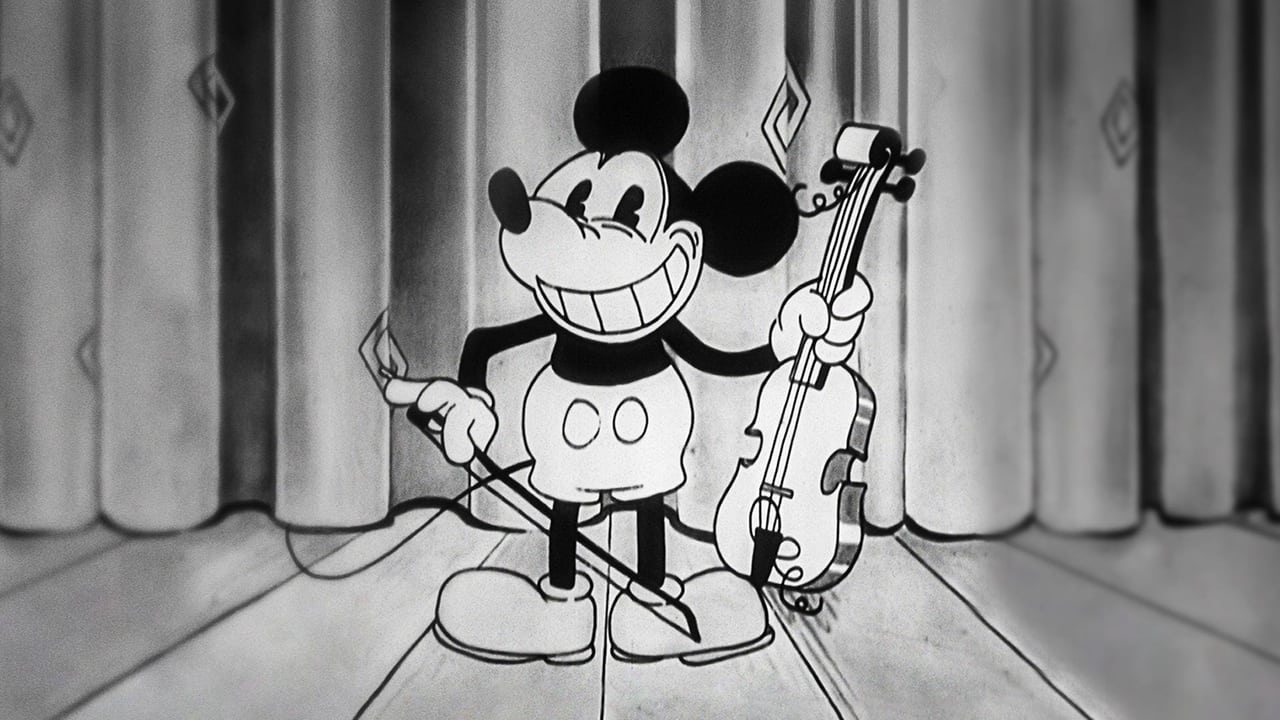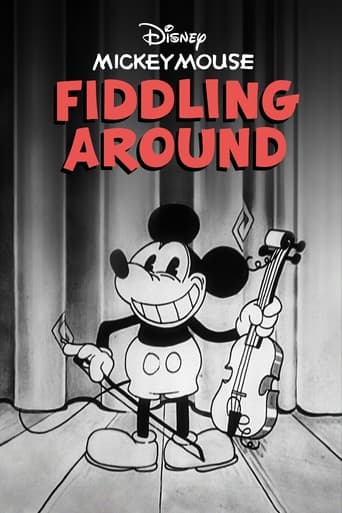


Absolutely brilliant
... View MoreAbsolutely amazing
... View MoreThe first must-see film of the year.
... View MoreGreat example of an old-fashioned, pure-at-heart escapist event movie that doesn't pretend to be anything that it's not and has boat loads of fun being its own ludicrous self.
... View MoreAs I grew up, my lone exposure to classical music came from the animation world. That, and "The Lone Ranger." The producers of various cartoons would frequently have actual concerts with animals or other characters actually conducting an orchestra of like characters. In many cases, it was simply used as background music. In this one, Mickey Mouse, who frequently showed his musical prowess, comes out on stage with a violin. Of course, he's not totally in control of his instrument. Nevertheless, other than the music, the episode is a bit lacking in plot development.
... View MoreThere is just a lot of fiddling around in the cartoon, with Mickey Mouse playing a host of classics on his violin. There are a few times in the beginning where I chuckled due, including the part where Mickey attempts to tune his violin, but resulting in screeching sounds. Not much of a story here, but definitely there's music to your ears. Grade C+
... View MoreI have to say as a Disney, Mickey and classical music enthusiast, I thoroughly enjoyed Fiddlin' Around(or Just Mickey). The story is very thin and it is disconcerting to see him have long hair in some scenes and then no hair in others. The animation seemed uneven to me too, the personality animation is actually superb but the backgrounds for me were rather sparse and Mickey at the start was somewhat awkward-looking. But there are many things that make it interesting. The beginning with a curtain opening to reveal another and so forth is a neat gag. There are some other nice gags, like the string breaking when Mickey is tuning up and his reaction to his heckler. The music is simply delightful, Morning, Noon, and Night in Vienna by Suppe is a perfect piece to introduce Mickey to the unseen audience, and the Hungarian Dance by Brahms and William Tell by Rossini are really rousing, the latter is probably where Mickey is at his funniest as he grovels with his long hair, loses his balance and is pretty much crawling on the floor. Sandwiched in the middle is the more thoughtful and poignant Schumann Traumerai, how Mickey reacts to it in his facial expressions makes the scene work and the music is just beautiful, though in all honesty I would have preferred for the playing itself to have had more legato. Mickey is exceptional in what is essentially a one-man's show, and his facial expressions from passion, devout sadness and anger are priceless and beautifully expressed, it really is some outstanding personality animation. The changes in perspective are also interesting, right from wide shots, close-ups and side-shots from left/right-centre. All in all, an interesting and worthwhile cartoon, just not one of Mickey's very finest or among my favourites. 7/10 Bethany Cox
... View MoreA Walt Disney MICKEY MOUSE Cartoon.It's JUST MICKEY alone on stage as he gives a solo violin recital.The Mouse has this little black & white film all to himself - no other characters appear on camera. The plot consists entirely of Mickey performing his longhair music and responding to the unseen audience and it is very funny. The three selections are the Hungarian Rhapsody No. 2 by Liszt, Schumann's Träumerei and the Finale to Rossini's William Tell Overture.Walt Disney (1901-1966) was always intrigued by drawings. As a lad in Marceline, Missouri, he sketched farm animals on scraps of paper; later, as an ambulance driver in France during the First World War, he drew figures on the sides of his vehicle. Back in Kansas City, along with artist Ub Iwerks, Walt developed a primitive animation studio that provided animated commercials and tiny cartoons for the local movie theaters. Always the innovator, his ALICE IN CARTOONLAND series broke ground in placing a live figure in a cartoon universe. Business reversals sent Disney & Iwerks to Hollywood in 1923, where Walt's older brother Roy became his lifelong business manager & counselor. When a mildly successful series with Oswald The Lucky Rabbit was snatched away by the distributor, the character of Mickey Mouse sprung into Walt's imagination, ensuring Disney's immortality. The happy arrival of sound technology made Mickey's screen debut, STEAMBOAT WILLIE (1928), a tremendous audience success with its use of synchronized music. The SILLY SYMPHONIES soon appeared, and Walt's growing crew of marvelously talented animators were quickly conquering new territory with full color, illusions of depth and radical advancements in personality development, an arena in which Walt's genius was unbeatable. Mickey's feisty, naughty behavior had captured millions of fans, but he was soon to be joined by other animated companions: temperamental Donald Duck, intellectually-challenged Goofy and energetic Pluto. All this was in preparation for Walt's grandest dream - feature length animated films. Against a blizzard of doomsayers, Walt persevered and over the next decades delighted children of all ages with the adventures of Snow White, Pinocchio, Dumbo, Bambi & Peter Pan. Walt never forgot that his fortunes were all started by a mouse, or that simplicity of message and lots of hard work always pay off.
... View More